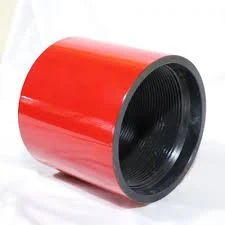- Afrikaans
- Albanian
- Amharic
- Arabic
- Armenian
- Azerbaijani
- Basque
- Belarusian
- Bengali
- Bosnian
- Bulgarian
- Catalan
- Cebuano
- Corsican
- Croatian
- Czech
- Danish
- Dutch
- English
- Esperanto
- Estonian
- Finnish
- French
- Frisian
- Galician
- Georgian
- German
- Greek
- Gujarati
- Haitian Creole
- hausa
- hawaiian
- Hebrew
- Hindi
- Miao
- Hungarian
- Icelandic
- igbo
- Indonesian
- irish
- Italian
- Japanese
- Javanese
- Kannada
- kazakh
- Khmer
- Rwandese
- Korean
- Kurdish
- Kyrgyz
- Lao
- Latin
- Latvian
- Lithuanian
- Luxembourgish
- Macedonian
- Malgashi
- Malay
- Malayalam
- Maltese
- Maori
- Marathi
- Mongolian
- Myanmar
- Nepali
- Norwegian
- Norwegian
- Occitan
- Pashto
- Persian
- Polish
- Portuguese
- Punjabi
- Romanian
- Russian
- Samoan
- Scottish Gaelic
- Serbian
- Sesotho
- Shona
- Sindhi
- Sinhala
- Slovak
- Slovenian
- Somali
- Spanish
- Sundanese
- Swahili
- Swedish
- Tagalog
- Tajik
- Tamil
- Tatar
- Telugu
- Thai
- Turkish
- Turkmen
- Ukrainian
- Urdu
- Uighur
- Uzbek
- Vietnamese
- Welsh
- Bantu
- Yiddish
- Yoruba
- Zulu
Dimensions and Specifications of Casing and Coupling Components for Pipeline Applications
Understanding Casing Coupling Dimensions An Essential Aspect of Oil and Gas Drilling
Casing coupling dimensions play a crucial role in the oil and gas industry, particularly in drilling operations. Understanding these dimensions is essential for ensuring the integrity and efficiency of well construction. Casing couplings are the threaded connectors that join sections of casing pipe together, which is a vital component of the drilling process. This article aims to provide an overview of casing coupling dimensions, their importance, and their applications in drilling operations.
Casing is a cylindrical structure installed within a borehole to provide support and prevent the walls from collapsing. It also serves as a barrier to protect groundwater resources and maintain wellbore integrity during the production of hydrocarbons. The casing tubing is not only subjected to high pressures but also must contend with mechanical stresses and corrosive environments. Thus, it is essential that the coupling dimensions adhere to industry standards and specifications.
Casing couplings come in various sizes, materials, and designs to accommodate different types of drilling operations. Common materials used for couplings include carbon steel, stainless steel, and alloy steel, each chosen based on the specific environmental conditions and operational requirements. The dimensions of casing couplings typically include the outer diameter, inner diameter, and length, which must be carefully measured and manufactured to ensure a proper fit and effective sealing between joints.
Industry standards, such as those set by the American Petroleum Institute (API), provide guidelines for casing coupling dimensions. For example, API 5CT outlines specifications for casing and tubing, detailing the acceptable dimensions, thread types, and mechanical properties of couplings. Adhering to these standards is crucial, as it ensures compatibility between different manufacturers and guarantees the structural integrity of the entire casing system.
casing coupling dimensions

One of the critical factors in casing coupling dimensions is the thread type. There are various thread designs, including API round threads and premium threads, each with specific characteristics suited for different applications. The choice of thread type influences the strength and leak resistance of the connection. For instance, premium threads are often used in high-pressure and high-temperature environments due to their superior sealing capabilities.
Properly designed and manufactured casing couplings minimize the risks of leaks and failures during drilling operations. A failure in a coupling can lead to catastrophic consequences, including loss of drilling fluid, damage to the wellbore, and potential hazards to personnel and the environment. Therefore, meticulous attention to casing coupling dimensions ensures a robust, efficient, and safe drilling operation.
Moreover, advancements in technology have led to improved methods for measuring and manufacturing casing coupling dimensions. Automation and precision engineering techniques have facilitated the production of couplings that meet stringent tolerances, enhancing the overall quality and performance of casing systems. Additionally, innovative materials and coatings are being developed to withstand extreme conditions, further contributing to the longevity and reliability of casing couplings.
In conclusion, casing coupling dimensions are a fundamental aspect of oil and gas drilling operations. Understanding the specifications and standards associated with these dimensions is essential for achieving safe and efficient well construction. As the industry continues to evolve, staying informed about advancements in coupling technology and design will be crucial for maintaining the integrity and performance of drilling operations, ensuring that the industry can meet the growing demand for energy in a sustainable manner.
-
Tubing Pup Joints: Essential Components for Oil and Gas OperationsNewsJul.10,2025
-
Pup Joints: Essential Components for Reliable Drilling OperationsNewsJul.10,2025
-
Pipe Couplings: Connecting Your World EfficientlyNewsJul.10,2025
-
Mastering Oilfield Operations with Quality Tubing and CasingNewsJul.10,2025
-
High-Quality Casing Couplings for Every NeedNewsJul.10,2025
-
Boost Your Drilling Efficiency with Premium Crossover Tools & Seating NipplesNewsJul.10,2025







